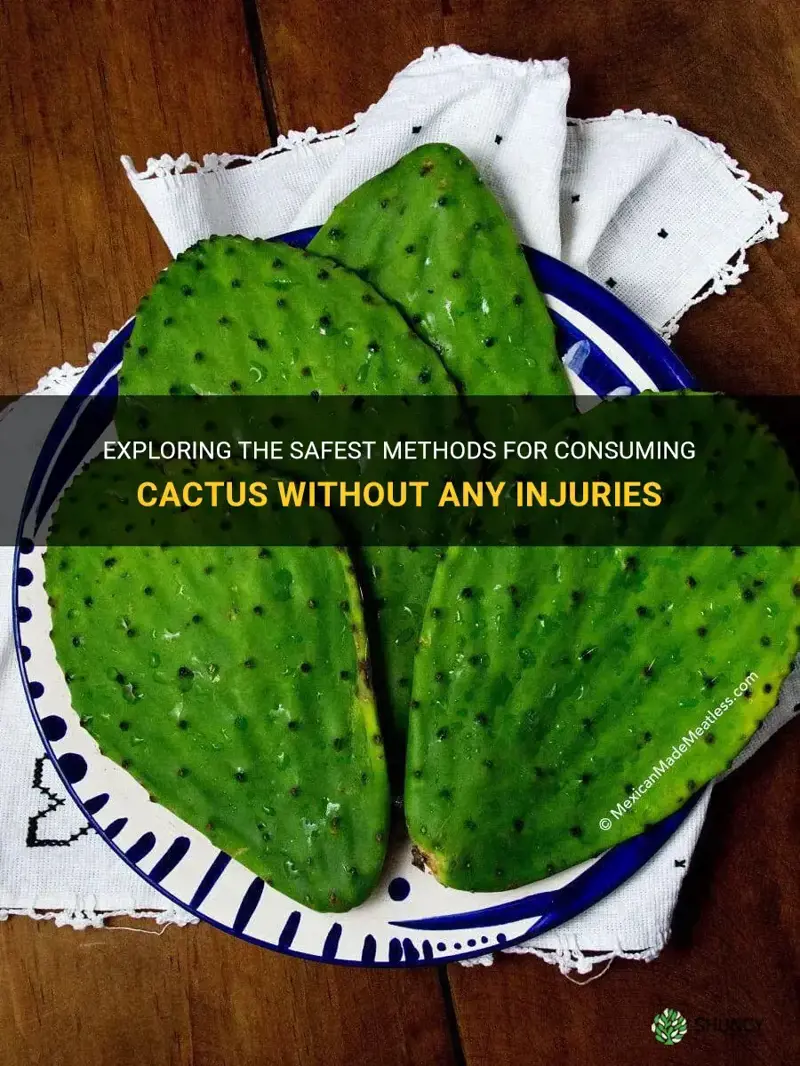Have you ever pondered the question: how does one partake in the consumption of cactus without encountering the painful repercussions of its prickly defenses? Cacti are often revered for their resilience and adaptability, yet they remain enigmatic to many aspiring culinary adventurers. This article is dedicated to unraveling the mystery of consuming cacti safely and deliciously. Prepare yourself for a journey that promises not only nourishment but also a dash of excitement.
The allure of consuming cacti lies in their unique textures and flavors. However, the fear of sharp spines and irritating glochids—the tiny hair-like structures found on certain cacti—can be a formidable deterrent. So, let’s dive deeper into the intricacies of these fascinating plants and discover how to enjoy their benefits without succumbing to injury.
Understanding the Anatomy of Cacti
Before we delve into preparation techniques, it is vital to appreciate the distinctive anatomy of cacti. Cacti belong to the family Cactaceae, which comprises over 2,000 species, each showcasing a variety of shapes, sizes, and colors. The most commonly consumed types include prickly pear (Opuntia) and the fruit of the saguaro (Carnegiea gigantea).
One must recognize that not all cacti are created equal. Some possess formidable thorns that can inflict pain, while others, like the beloved prickly pear, offer their fleshy pads and fruits with a milder defense system. Understanding these differences is crucial in avoiding the unfortunate experience of an unsightly prick in your finger.
Choosing the Right Cactus for Consumption
The selection process is one of the most essential steps in ensuring a safe and enjoyable experience. When eyeing potential candidates at the local market or grocery store, consider the following:
– **Prickly Pear Pads and Fruits:** Often available fresh or pre-prepared, prickly pears are particularly sought after for their vibrant colors and sweet flavors. Look for deep green pads and brightly colored fruits, which indicate ripeness.
– **Avoid Overripe or Dull Specimens:** These can often be perceived as unappetizing and may lack the crispness that makes them delightful in culinary applications.
– **Observe the Glochids:** While selecting, be aware of the presence of tiny glochids. It is advisable to choose pads that have been de-spined and trimmed by a knowledgeable vendor.
Preparatory Steps Before Consumption
Now that you have procured the perfect cactus specimens, it is time to prepare them for culinary adventures. Preparation is a multifaceted process that can mitigate the risks associated with consuming these plants.
– **Thoroughly Wash:** Begin by washing the cactus pads or fruits under running water to remove any dirt and contaminants. This initial step is crucial for food safety.
– **Remove the Spines and Glochids:** Using a pair of kitchen tongs or gloves, carefully remove any visible spines and glochids. A sharp, sturdy knife is essential in this stage; scrape the surface to ensure that no microscopic irritants remain. Take your time, as this step is paramount in guaranteeing a pleasant eating experience.
– **Cutting Techniques:** After ensuring the pads are free of thorns, slice them into manageable pieces. For a brighter flavor, consider cutting them into cubes or strips, suitable for salads or stir-fries.
Rocking the Flavor: Culinary Applications
Now, the most exhilarating part—how to incorporate cactus into your diet. The culinary versatility of cacti is often underestimated. Below are some delectable ways to enjoy these nutritious wonders:
– **Grilling:** Grilled cactus pads exude an unparalleled smoky flavor. Just toss the prepared pads on the grill, allowing them to char slightly for added texture. Serve them alongside roasted vegetables or atop a grilled meat dish.
– **Salads and Salsas:** Incorporate diced cactus pads into salads for an unexpected crunch. Alternatively, combine diced prickly pears with tomatoes, onions, and cilantro for a spicy salsa that pairs wonderfully with tortilla chips.
– **Juicing or Smoothies:** Blend cactus fruit with other fruits, such as mango or banana, for a refreshing smoothie. This vibrant concoction not only provides hydration but also a medley of nutrients.
Final Thoughts: Embracing the Cactus Adventure
Eating a cactus without getting hurt is not merely about avoiding physical injury; it also involves embracing the rich culture and flavors that these magical plants offer. As you venture into the world of cactus consumption, remember that patience and preparation are your greatest allies.
Are you ready to embark on this culinary quest, armed with knowledge and curiosity? The spiny exterior of the cactus may seem formidable, but with the right techniques and recipes, you will find that these plants are not only edible but also delectable. So gather your ingredients, prepare your tools, and let the cactus experience enrich your culinary repertoire!





Leave a Comment